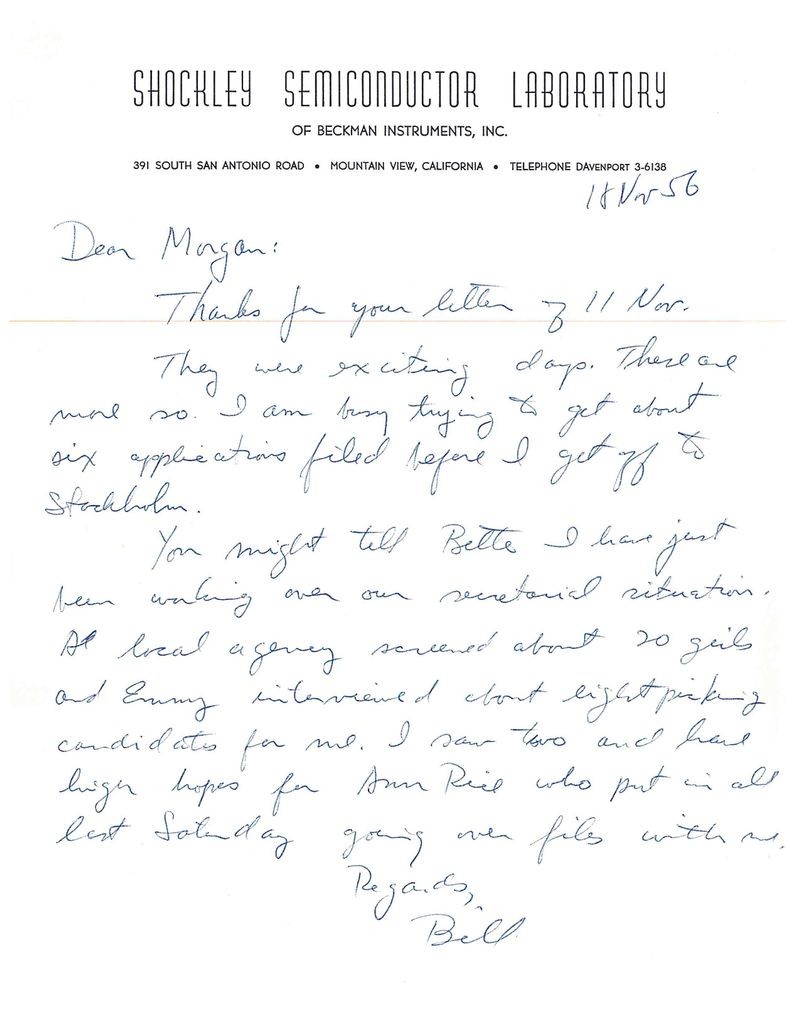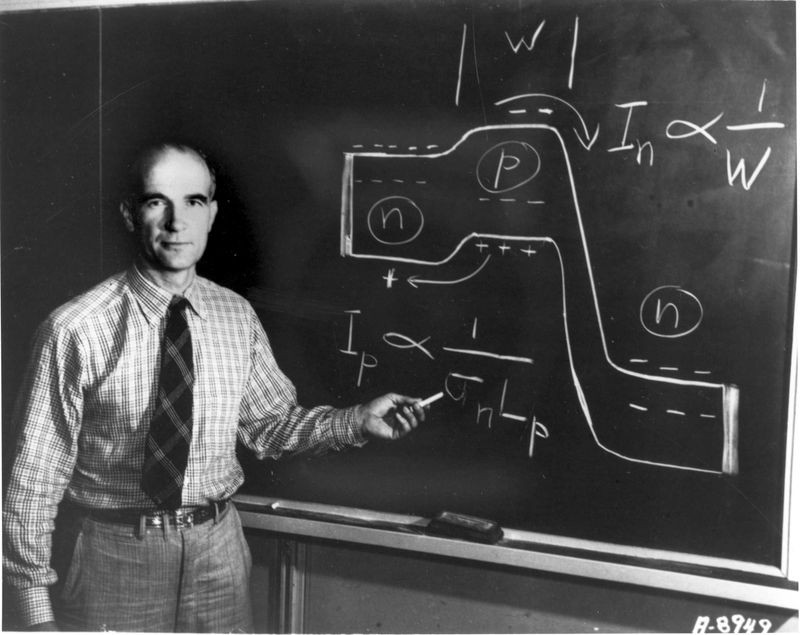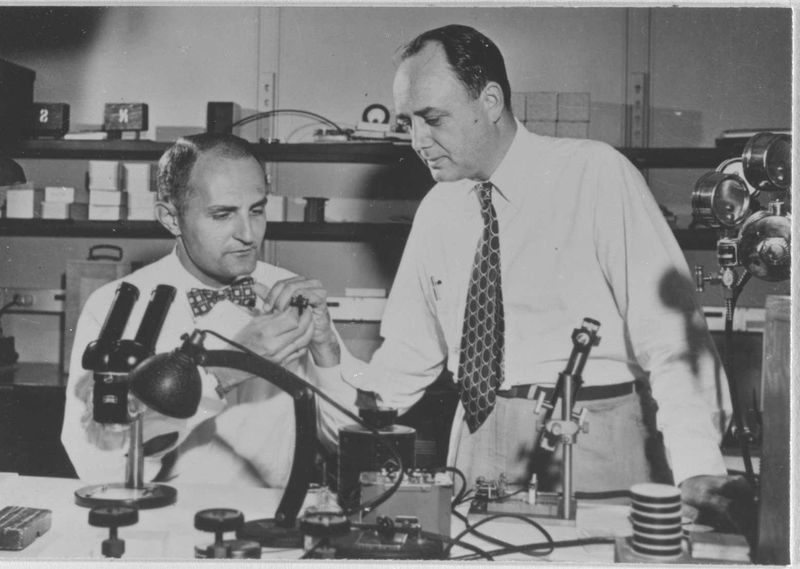

William Shockley letter to Morgan Sparks, Nov. 18, 1956
Every now and then we hear of a document being “found” or “discovered” in an archive. Several months ago there was a lively exchange on The Atlantic about the “discovery” of a medical report at the National Archives. The report was written by Charles Leale, the first physician to attend to President Lincoln after he was shot at Ford’s Theater. While the researcher claimed the document was “found” because there was no record of the individual item’s existence, the National Archives attests it was never lost because a decision had been made to acquire, preserve, and provide access to the surgeon general’s incoming correspondence – where the item was filed.
We recently had a find of our own at the museum, albeit not on the level of the Leale report. While longtime museum volunteer Henry Landa was working away, he stopped to show me a donation he had just cataloged: two letters written by transistor co-inventor and Nobel Prize winner William Shockley, dated 1956, one typed and one handwritten. These letters were not “found” in the archive, because they were never lost. They followed the prescribed path from donor, to registrar, to processing shelf, to permanent storage. At each step along the way, the letters were tracked in our content management system. These letters, originally written in Mountain View, CA, traveled to Bell Labs in Murray Hill, NJ, and eventually found their way back to Mountain View, and a permanent home in the museum’s collection. They are now more discoverable than they were before, because they have an associated catalog record that is searchable through the museum’s online catalog, but they were never lost.
The letters themselves do not reveal any earth-shattering discoveries. In one letter, Shockley wrote to Morgan Sparks on Shockley Semiconductor Laboratory letterhead, “Thanks for your letter of 11 Nov. They were exciting days. These are more so. I am busy trying to get about six applications filed before I get off to Stockholm.” … where he would, on Dec 9 of that year, receive the Nobel Prize in Physics for his co-invention (with William Brattain and John Bardeen) of the point-contact transistor. Shockley then recounts how he’s using an agency to find a secretary and thinks he may have found someone that will work. Here’s the interesting discovery or “find”: Shockley included a fortune from Ming’s Chinese restaurant in Palo Alto with the letter. The fortune reads, “There is yet time enough for you to take a different path.” What could Shockley have meant in sending this to Sparks? It’s so intriguing. Was it a joke between friends? Was Sparks contemplating a move or decision that Shockley felt was ill-advised? I’ll probably never know and there isn’t enough context with the two letters to develop an informed theory. Perhaps I’ll do some digging in our Morgan Sparks papers X5742.2010 and see if I can flesh out an answer.

Dr. William Shockley joined Bell Telephone Laboratories in 1936. Under Shockley’s direction, John Bardeen and William Brattain demonstrated the first semiconductor amplifier: the point-contact transistor. Shockley invented the more robust junction transistor. The three shared the 1956 Nobel Prize in Physics for their inventions. Reprinted with permission of Alcatel-Lucent USA Inc.

Morgan Sparks (right) joined Bell Telephone Laboratories in 1943. Working with Gordon Teal, the two developed the first successful junction transistors based on William Shockley’s work. Reprinted with permission of Alcatel-Lucent USA Inc.
While the letters were not found, I do think the fortune was found. No one knew it was there. There wasn’t any mention of it on the incoming receipt, or in the acquisition record, or even in the catalog record once the letters were fully described. The argument could be made that the fortune was unimportant and didn’t need to be tracked anywhere, and I would agree. But it’s also typical practice not to catalog at the item level, or even the folder level in many cases, depending on the volume of records waiting to be processed and the resources available to an archive. While archivists do gain an intimate knowledge of their collections through years of working with them, and could tell you the type of material that is likely to be in a box or folder, they cannot describe the exact contents of individual folders for thousands of boxes, myself included. The point is, for the dedicated researcher, it is worth visiting an archive in-person and seeing what else might be in a folder. If you look, you too might find an interesting fortune, or a Leale report.
And yes, Ming’s is still in Palo Alto. Although it has moved from it’s original location of 4100 El Camino Real, across from Stanford University, to Embarcadero Road.